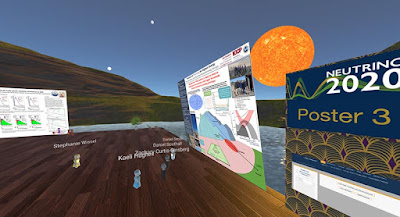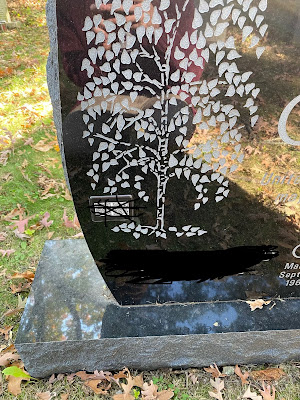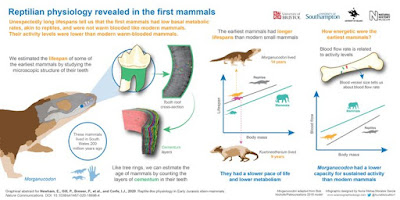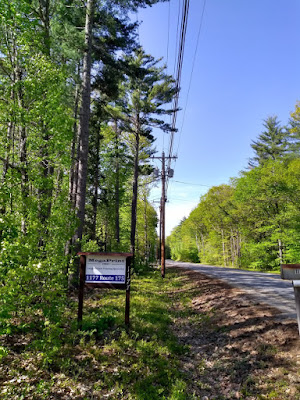The 29th International Conference on Neutrino Physics and Astrophysics poster session looked like it came from Second Life:
Apparently nobody has heard that Second Life is a very niche community these days. Some people just can not let go of the notion of virtual spaces.
But the organizers were happy with the outcome:
Del Tutto says the poster session was “absolutely a success.” But in the moment, it was a risky choice. Organizers, including Del Tutto himself, were “skeptical” that the VR format would work, he says. To improve its chances, Del Tutto ran a beta version for a couple dozen users about a week before the conference. Had it gone badly, they had a backup plan to run the poster session on Zoom.
The virtual format made discussion for some attendees much easier. Because the avatars’ appearances were devoid of race or gender, some expressed that they found it easier to meet and talk to new people, says Del Tutto.
• • • • •
Did you know there are fonts specifically meant for titles? Below is the same font (Perpetua) in its regular weight (black) and titling weight (white).
MyFonts continues dispensing typographic wisdom in another one of the occasional primers. They write:
(Titling fonts) were specifically designed to look best in predominantly larger sizes. Titling fonts often have a more pronounced weight contrast, tighter spacing, and more condensed proportions than their text-sized cousins.
PDF here.
• • • • •
A few months back, The Word Lab featured a session on conference posters. You can now download the slides here.
• • • • •
PosterPresentationLabs is a commercial design service for conference posters. Their website says they have been making conference posters for scientists since 2008, although their Instagram account started late September.
Their work looks good, although text heavy. That may be the fault of the researcher and not the designer, however.
• • • • •
The business of scientific conferences may never, ever be the same. This article in The Scientist examines the stresses that have been building on conferences for a long time, notably the carbon costs of conferences.
And people like a lot of the convenience of meetings on screens.
• • • • •
Given what appears to be the imminent death – or at least irrevocable change – of conferences, Laura Helmuth pulled a quote from this Scientific American article.
“The two scientists began collaborating in 2011, after meeting at a conference in Puerto Rico where they went to a café and talked about the overlap in their work.” Who else has started a collaboration during a conference break? I miss that part!
Andy Revkin responded:
Great observation/question - and relates to what is missing in conventional zoom-a-thons. Space to chill and explore. Anyone out there doing zoom walk-and-talk breakouts via phone? Anything sustaining this capacity? I'll do a #sustainwhat #thrivingonline episode on your ideas.
Similarly, in an unrelated thread, Guillaume Lobet wrote:
What I am missing is the interaction with colleagues over a cup of bad coffee and cheap biscuits. Interactions and networking have always been a big part of conferences for me. This is the part I miss the most! (I do not care much for fancy locations and nice hotels)
Lobet suggests a hybrid format that combines the physical meeting (for some) and recorded content (for many.
• • • • •
The Scientist article above also links out to an article co-authored by Mike Morrison (he of the billboard style poster) about boosting the impact of conferences.
The article’s bottom line: Everything in a scientific conference should be easily viewable online for free.
• • • • •
Justin Joque spotted a headstone with a QR code linking to the deceased list of papers and citation metrics.
Published and published and still perished.
• • • • •
Update, 30 October 2020: Normally, I don’t add entries to month link round-ups. Anything that I miss normally just goes into the next month’s compilation. But this New York Times article on US election maps is too timely to wait until the last week of November.
Great discussion about how visualizations can deeply misrepresent reality, while purporting to be “objective.”
Also shows how unfortunate it is that political parties used bright primary colours for their branding.
Hat tip to Bethany Brookshire.
















